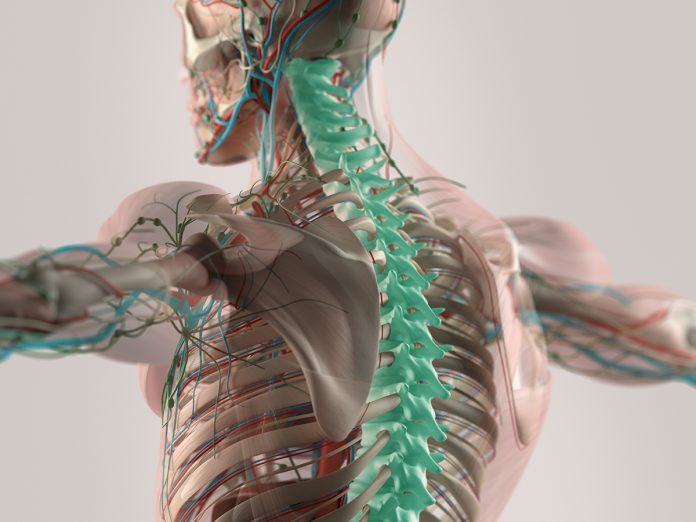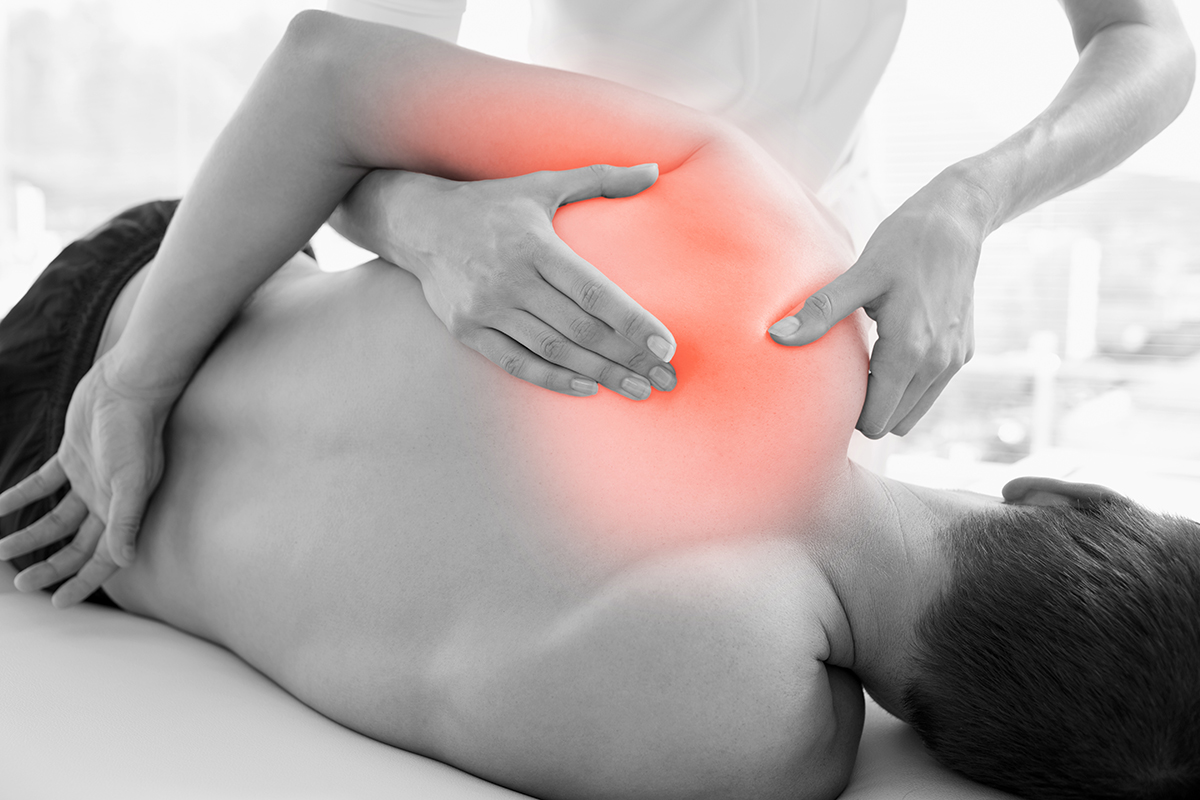In this interview, Professor Dr Martin Flück at the Laboratory for Muscle Plasticity at Balgrist University Hospital explains his fascinating research around musculoskeletal function, including the post-operation recovery of patients that have undergone surgery due to the rupture of a rotator cuff tendon
To set the scene, Professor Dr Martin Flück at the Laboratory for Muscle Plasticity at Balgrist University Hospital introduces us to the excellent research that takes place at the Department of Orthopaedics. He tells us that the main part of their work concerns musculoskeletal function, namely the muscles and as such, they are currently focussing on the post-operation recovery of patients that have undergone shoulder surgery due to the rupture of a rotator cuff tendon. They are also trying to identify biomarkers that may predict the existing and unsuccessful healing or a better response.
Martin then explains that this aforementioned approach is a unique one. In that context, what has been investigated involves the institutional factors of genetics which are important, as well as the influence of constitutional factors of genetics, such as fitness of the muscle. This, Martin adds, may improve recovery through a better nurturing and another major aspect of the Department of Orthopaedics work is their shoulder surgery team, as well as other projects which are in the planning stage. While the details of these cannot be revealed now, Martin can tell us that these concern the delay of injury where the knee is concerned. Certainly, he argues that the muscle must play a major role when it comes to stabilising the joint via direct and indirect. The key question is to figure out to what extent specific muscles, and the associated activity- dependent remodeling of the musculoskeleton, contribute to this.
Maintaining the highest standards of quality and performance
The conversation then moves to detail Martin’s reflections on how as a privately owned university hospital, Balgrist University Hospital is committed to maintaining the highest standards of quality and performance. We know that Balgrist University Hospital represents the Department of Orthopaedics of The University of Zurich (UZH) and has a very good share of doctors and students, Martin notes. He then expands this point, focussing on the crucial role of research at the Balgrist Campus.
“Balgrist University Hospital invests in continuing education and collaboration with universities including the polytechnic school, ETH Zurich who perform research. Research is only performed internally in a competitive manner and is presented and evaluated for its merits and the Campus offers a platform to solve actual questions the patients have through that interaction.
“Then there is a scientific board who is continually evaluating projects and these are also perceived through the congress participation that we all undertake as surgeons and students. However, I still identify with some topics that were underdeveloped but consequently, I have recently seen adaptations by recruiting a new professor. While the preventative aspects were not fully exploited but now it looks like we have initiatives to get that rolling in a much better way than previously.”
A new generation of therapies for weak muscles
Martin then tells us about the research taking place at the Balgrist Campus into personalised interventions which are helping pave the way for a new generation of therapies for weak muscles. He underlines that the research here is divided into three areas.
“The first study MARK-GEROT focuses on the healing of the tendon reconstruction – there we try to identify markers that allow the personalisation and predicting of healing, which may change rehabilitation later on, such as the duration or the conditioning of the muscle. This is one of the biomarkers, the muscle composition, which is the subject of unpublished results from the MARK-GEROT investigation but abstracts are available. There are two other topics, one concerns an accepted paper where we set out ways to help cardiovascular patients to improve during rehabilitation.
“This is quite interesting because much research has been done on this, and what these exercise paradigms that all patients do, which allow only some to respond and improve. Muscle is a very big ingredient of it because it allows them to be active and, therefore, to train, and then improve the quality of life and gain independence. We found in a recently published study that there are genetic markers that reflect muscle condition, which can be helped by training which is also modified by specific medications, so have a pattern of how we can then treat patients in the future (see Mathes et al- 2015).
“When we first wrote that report, the first patients showed quite a dramatic rehabilitation through personalised types of training (Fitze, Franchi, Popp, Ruoss, Catuogno, Camenisch, Lehmann, Schmied, Niederseer, Frey, Martin Flück, Concentric and Eccentric Pedaling-Type Interval Exercise on a Soft Robot for Stable Coronary Artery Disease Patients: Towards a Personalized Protocol, JMIR RESEARCH PROTOCOLS, in press). This is an interdependent research approach and now, we don’t know how to apply it because it involves cardiovascular and rehabilitation individuals, as well as the work of basic scientists who are conducting the measurements to help us identify the markers. We will have to see how that develops in terms of if there are fruitful economic pipelines because they change paradigms.”
This is a major challenge because it involves relocating patients to other hospitals, Martin stresses, and it is an issue when you consider patient numbers. In some instances, such an approach has worked in rehabilitation but not in the field of personalised medicine.
Martin then tells us that the third area of research entitled BACK-GENE to detail is where Balgrist University Hospital has patients from the chiropractic’s who suffer from chronic non-specific low back pain, where a specific hypothesis is followed. The problem here is that such patients suffer from relative muscle perfusion where basically, the muscle dries out of nutrients (Valdivieso et al. 2018;). Martin adds that Balgrist University Hospital is close to completing a study on this, which includes functional tests for back muscle mobility, as well as mental and muscle aspects and how to relate these to genetics. We also find out that in an already published paper that alludes to this hypothesis, that the condition of the back muscles is already part of the prevention. But Martin notes that specific groups could be helped if they specifically trained the strength and perfusion of the back muscles.
The conditioning of skeletal muscle structure
The interview then goes on to reveal something about the work of the laboratory for muscle plasticity which investigates the mechanisms that underlie the conditioning of skeletal muscle structure and function during recovery from surgical interventions and rehabilitation. Martin responds by saying that a number of studies have been conducted during the past 20 years concerning healthy subjects and from these, they know the factors and the conditions necessary to maintain muscle. Martin explains more about this to us.
“These include muscle strength and endurance which interplays to help people conduct activities. We have been using that information in very extreme models to prove it as indicated in the work of published astronauts and in this very controlled situation we can show that it is the volume and intensity of exercise that directs strength and endurance (Rittweger et al. Sarcolab pilot study into skeletal muscle’s adaptation to long-term spaceflight. NPJ Microgravity 4: 18, 2018. doi: 10.1038/s41526-018-0052-1,). On board the international space station, we can monitor every step taken, so this translates into a study we published in 2018 which follows people over 16 years after knee surgery (Flück et al, Knee Extensors Muscle Plasticity Over a 5-Years Rehabilitation Process After Open Knee Surgery. Front Physiol 9: 1343, 2018. doi: 10.3389/fphys.2018.01343.). Here, we showed that the response is relatively slow and varies but it really relates to measures on activity so the key factor is that if rehabilitation is not done sufficiently or intense enough, the duration may not be enough because it took them more than a year to recover to acceptable levels. For some markers of fitness, it took them more than a year to recover. This indicates that the imbalance in the operated, respective to the non- operated leg, was related to muscle disuse.
“There was, therefore, a call for a very specific focus on training which is just not sufficient. In a way, that poses new social questions about how much people train? Those that train very hard will improve more but some are not used to doing that. The study is a retrospective and the current ways of rehabilitation are already better than what they were 16 years ago but still, there seems to be a very distinct lack of recovery when we talk about reducing the fitness of the muscle that persists for a year but people should consider themselves as professional athletes for at least a couple of months. Only under those conditions do they recover.”
Martin then tells us about a non-complicated wrist fracture he suffered from in July 2018 when he was run over while riding his bike. Following the advice given by his doctor, Martin nearly recovered functionally just three weeks later. This was due to the load and volume of low-impact exercise on the wrist that Martin carried out which allows the bone and the muscle to maintain a minimum function, so aggressive training was possible. While it was a simple fracture, Martin believes this is a good case study to show how bone fracture works in athletes, but this is not a method of recovery that most people would normally accept. Nevertheless, there is really good expertise around, for example, when it comes to professional football players. Following on from an already published book (Muscle Injuries in Sports 1st Edition, Kindle Edition, by Hans-W. Müller-Wohlfahrt, Peter Ueblacker, William E. Garrett Jr, Lutz Hänsel, Thieme, ISBN-10: 9783131624710), Martin then draws our attention to how we find out here that the problem surgeons know about is that it will take most people a year to carry out such training paradigms, and as such, he calls for individual subjects who are willing to do so.
The emphasis of the research team
As this interview draws to a close, Martin speaks about the emphasis of the research team at the Balgrist Hospital Orthopaedics Clinics when it comes to the major musculoskeletal affections that exist. In terms of raw numbers, it is already known which fractures or musculoskeletal effects are present and not all of those are tackled at the Balgrist Hospital, Martin says before adding his concluding remarks.
“We tackle those that involve a very active joint that may be involved in movement or propulsion rather than posture control, so we look at the spinal aspects but not too much because the delicate interventions there are directed by the surgeon. So, our work involves the active joint that concerns the shoulder and the knee and all the attached muscles where we know that rehabilitation programmes are available and can be improved. This indicates that the muscle is a very active ingredient for recovery through the mechanical forces that it generates which allow the tendon and bone to grow correctly.
“While it is not yet accepted, which is in a way paradoxical, I do gene therapies and if you go to an international congress you can see that there is a very active part of research advocating biologicals as treatment. To some extent, and for obvious reasons of safety, gene therapy does not yet meet acceptance in the surgical field, which is a contrast to what we have seen in other areas before. We find that in models of Achilles tendon injury and repair in the rat, we can, in part, echo the problems of muscle reconditioning.”
Martin concludes that this is a really important area to mention because it is really hard to find the perception for innovative approaches directed to personalise musculoskeletal rehabilitation when people are for economic reasons often resistant to resource-intensive applications but in contrast, this is a most active part of Martin’s own research.
Please note: This is a commercial profile
Professor Dr Martin Fluck
Laboratory for Muscle Plasticity
Balgrist University Hospital
Tel: +41 44 510 7350












